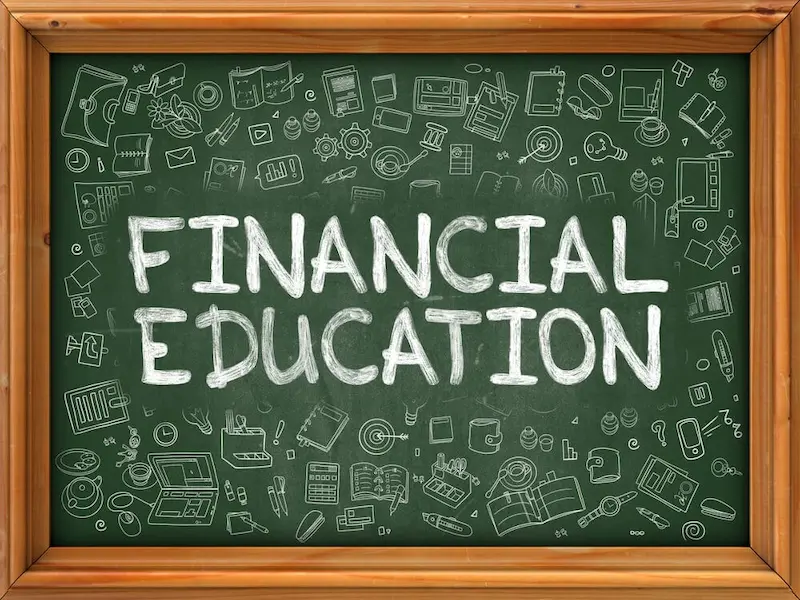Knowing how to handle money is really important. It helps people make smart money choices, prepare for the future, and reach their money goals. In today’s world, where money stuff can be confusing, teaching people about money is super important.
Before we talk about the 11 steps for teaching money stuff, it’s good to remember that teaching money stuff well means planning carefully and thinking about who you’re teaching. So, let’s begin by saying what knowing about money means.
Table of contents
- Step 1: Define Financial Literacy
- Step 2: Know Your Audience
- Step 3: Develop Clear Learning Objectives
- Step 4: Choosing the Right Teaching Methods
- Step 5: Creating an Engaging Curriculum
- Step 6: Emphasizing Budgeting and Saving
- Step 7: Explaining Debt Management
- Step 8: Exploring Investment Basics
- Step 9: Covering Insurance and Risk Management
- Step 10: Teaching About Credit Scores
- Step 11: Encouraging Continuous Learning
- Conclusion
- Frequently Asked Questions (FAQ’S)
Step 1: Define Financial Literacy
Understanding the Basics
Financial literacy is bounded by a wide range of financial knowledge and skills, including budgeting, saving, investing, and managing debt. It’s essential to have a solid grasp of these fundamentals. Breaking down complex financial concepts into manageable pieces is an important one to make them understand the basics. Start with the essentials and gradually introduce more advanced topics.
Step 2: Know Your Audience
Age and Demographics
Consider the age and demographics of your audience. Teaching financial education for kids, teenagers, adults, or seniors may require different approaches. So, it would be a good way to understand your audience.
Current Financial Knowledge
Assess the existing financial knowledge of your audience. This will help you tailor your teaching to their level of understanding. People have different learning styles and learning strategies—visual, auditory, kinesthetic, and more. Identify these preferences to engage your audience effectively.

Step 3: Develop Clear Learning Objectives
Ensure that your learning objectives align with the financial goals you’ve set. This ensures that your teaching is purposeful and relevant. Establish measurable outcomes for your financial education program. This allows you to track progress and evaluate the effectiveness of your teaching.
Step 4: Choosing the Right Teaching Methods
Traditional vs. Modern Approaches
Decide if you want to teach in a regular classroom or use modern tools like websites and apps, depending on what your audience prefers. Try all different learning resources, some like to learn through books when another one is good video lessons and some people like the classic classroom setting, while others enjoy learning online.
Interactive Learning Tools
Get your audience actively involved by using tools that let them participate, like financial calculators, apps, and simulations. These tools make learning more exciting and hands-on, so it’s not just listening but doing.
Gamification Strategies
Make learning fun and engaging by turning it into a game. Financial literacy games or other activities for financial literacy can be both entertaining and educational, helping your audience grasp complex concepts in an enjoyable way.
Step 5: Creating an Engaging Curriculum
Structuring Lesson Plans
Think of your lessons as a roadmap for learning. You should organize them in a way that builds on what your audience already knows. This way, you can guide them step by step through the learning journey. Imagine you’re helping them climb a ladder, one rung at a time.
Incorporating Real-World Examples
To make financial concepts easier to grasp, use real-life stories and situations. These relatable examples help your audience see how what they’re learning applies to their everyday lives. It’s like learning to cook by following a recipe with familiar ingredients.
Balancing Complexity and Simplicity
Your curriculum should be like Goldilocks’ porridge – not too hot (complex) and not too cold (simple). Avoid using too much fancy jargon or technical language that might confuse your audience. Keep it just right, so they can comfortably understand and apply what they learn. Think of it as explaining things in a way you’d explain to a friend who’s not a financial expert.
Step 6: Emphasizing Budgeting and Saving
Start with the basics: Explain how to create and manage a budget, providing practical tools to help your audience manage their money effectively.
Show your audience why saving is crucial and how it can lead to financial stability. Emphasize the power of compounding interest and encourage them to start saving regularly.
Engage your audience in hands-on budgeting exercises and challenges. Practical experience will reinforce what they’ve learned.
Step 7: Explaining Debt Management
Teach your audience about various kinds of debt, such as credit card debt, student loans, and mortgages. Help them understand the differences and implications.
Share strategies for managing and reducing debt responsibly. Explain the importance of paying off high-interest debt first to save money in the long run.Warn your audience about common debt traps, like borrowing too much or relying on payday loans, and how to steer clear of them.

Step 8: Exploring Investment Basics
Introducing Investment Concepts
Start with the basics of investing, including stocks, bonds, and mutual funds. Explain these concepts in simple terms to make them easy to understand.Show the importance of spreading investments to reduce risk. Explain how managing risk is crucial when building a balanced investment portfolio.
Long-Term Financial Planning
Highlight the benefits of long-term inveLong-term investing offers several significant benefits, primarily driven by the power of compound returns. When you invest for the long haul, your returns have the opportunity to generate additional earnings on previous gains.
Over time, this compounding effect can substantially increase your wealth. In essence, your money starts working for you, and as your investment grows, the growth accelerates.sting and how compound returns can significantly grow wealth over time.
Step 9: Covering Insurance and Risk Management
Importance of Insurance
Explain why insurance is essential to protect your financial well-being. Discuss various types, such as health, auto, and life insurance. Describe different coverage options and help your audience choose the right insurance based on their needs and circumstances.
Step 10: Teaching About Credit Scores
Significance of Credit Scores
Credit scores play a pivotal role in financial decisions, affecting various aspects of our financial lives. One of the most significant impacts is on borrowing. Lenders, whether it’s for a mortgage, car loan, or credit card, use your credit score as a gauge of your creditworthiness. A higher credit score often translates to better interest rates and more favorable loan terms, saving you money in the long run.
Building and Maintaining Good Credit
Building and maintaining a good credit history is essential for achieving financial stability. To do this, it’s crucial to establish credit responsibly. One practical tip is to use credit cards wisely. By making small, manageable purchases and paying the balances on time and in full, individuals can demonstrate responsible credit usage, positively impacting their credit history. Moreover, consistently paying bills and debts promptly, such as loans and utility bills, contributes to a strong credit profile.
Credit Score Factors
Credit scores are influenced by several factors, each carrying a specific weight in the calculation. Payment history is perhaps the most significant factor, representing your track record of paying bills on time. Late payments can have a detrimental effect on your score. Credit utilization, another critical component, refers to the percentage of your available credit that you’re using. It’s advisable to keep this ratio low, as high utilization can negatively impact your score.
Step 11: Encouraging Continuous Learning
Staying Updated on Financial Trends
The financial landscape is dynamic, subject to constant shifts influenced by economic conditions, technological advancements, and regulatory changes. Failing to stay informed can lead to missed opportunities or unexpected financial challenges. Encourage your audience to actively follow financial news, attend seminars or webinars, and seek advice from financial professionals to navigate this ever-changing terrain effectively.
Encouraging a Lifelong Learning Mindset
Encourage your audience not to view financial education as a one-time endeavor but as an ongoing journey. Suggest they read books, take courses, and participate in workshops to continuously expand their financial knowledge and skills. Remind them that the more they learn, the better equipped they’ll be to make sound financial decisions, adapt to changing circumstances, and achieve their long-term financial goals.
Resources for Ongoing Education
Provide recommendations for further financial education, such as books, websites, and workshops, so your audience can continue learning on their own.
Teaching financial literacy doesn’t have to be complicated. By simplifying these 11 steps, you can help your audience build a strong foundation in managing their finances effectively.
Conclusion
Financial literacy is a crucial life skill that can empower individuals to take control of their financial future. By following these 11 steps, you can effectively teach financial literacy to diverse audiences. Encourage your audience to become advocates for financial literacy, sharing their knowledge with friends and family.
Remember that teaching financial literacy isn’t just about personal finance; it’s about building a more financially secure and informed society. Your efforts can have a lasting impact on individuals and communities alike. Start your journey to teaching financial literacy today, and watch the positive changes unfold.
To get your hands on more such educational and free resources on coding, robotics, game development, etc., do check out the Brightchamps Blog Page now!
Frequently Asked Questions (FAQ’S)
A1. Financial literacy education can benefit individuals of all age groups, but it’s particularly impactful when started at a young age. Children, teenagers, and young adults can benefit greatly from learning about money management early on.
A2. There are various recommended financial literacy curricula available, such as the National Financial Capability Study’s High School Curriculum, the Jump$tart Coalition’s National Standards in K-12 Personal Finance Education, and programs like Dave Ramsey’s Foundations in Personal Finance.
A3. To measure the success of your financial literacy program, you can track participants’ financial behaviors and knowledge before and after the program. Assess their ability to create budgets, save money, and make informed financial decisions. You can also gather feedback through surveys to gauge the program’s effectiveness.
A4. Numerous online resources are available for teaching financial literacy, including websites like Practical Money Skills, Khan Academy, and educational YouTube channels. Many financial institutions and nonprofit organizations offer free online courses and materials as well.
A5. You can make financial education fun by using interactive games, simulations, and real-life scenarios. For children, use games like Monopoly or board games designed for financial learning. For teenagers, consider online budgeting tools and simulations that mimic real financial situations.


 We are an army of educators and passionate learners from BrightChamps family, committed to providing free learning resources to kids, parents & students.
We are an army of educators and passionate learners from BrightChamps family, committed to providing free learning resources to kids, parents & students.














